
Between 1/4 inch to 1 inch of water evaporates from a pool every day. The amount of water that evaporates is affected by air temperature, exposure to sunlight, wind speed, humidity, and the size of the pool. This article covers everything you need to know about how much water evaporates from a pool.
• How Much Evaporation Is Normal?
• How to Stop Water Evaporating
• Is it Evaporation or a Leak?
DOES POOL WATER EVAPORATE?
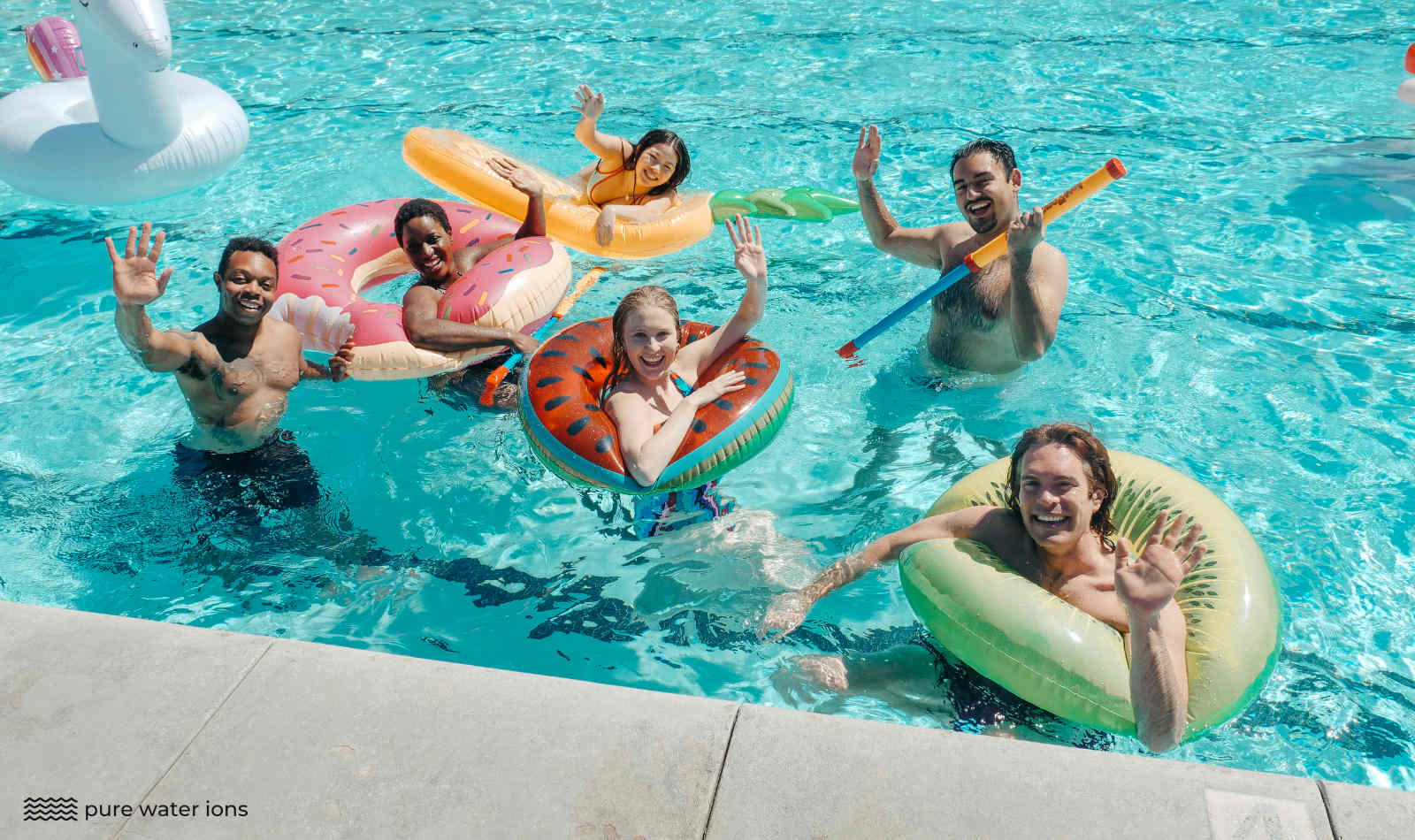
Yes, pool water evaporates. Pool water evaporates due to its exposure to heat and wind. Water evaporates more quickly from pools in hot and dry weather conditions. Pools located in hot dry climates with plenty of sunshine will experience the most evaporation. However, wind plays a significant role too, see below.
HOW DOES POOL WATER EVAPORATE?
As water molecules in pool water absorb heat from the sun they become energized and begin to vibrate. These energetic water molecules change from liquid form to gas. The gas molecules rise into the air above the pool as water vapor.
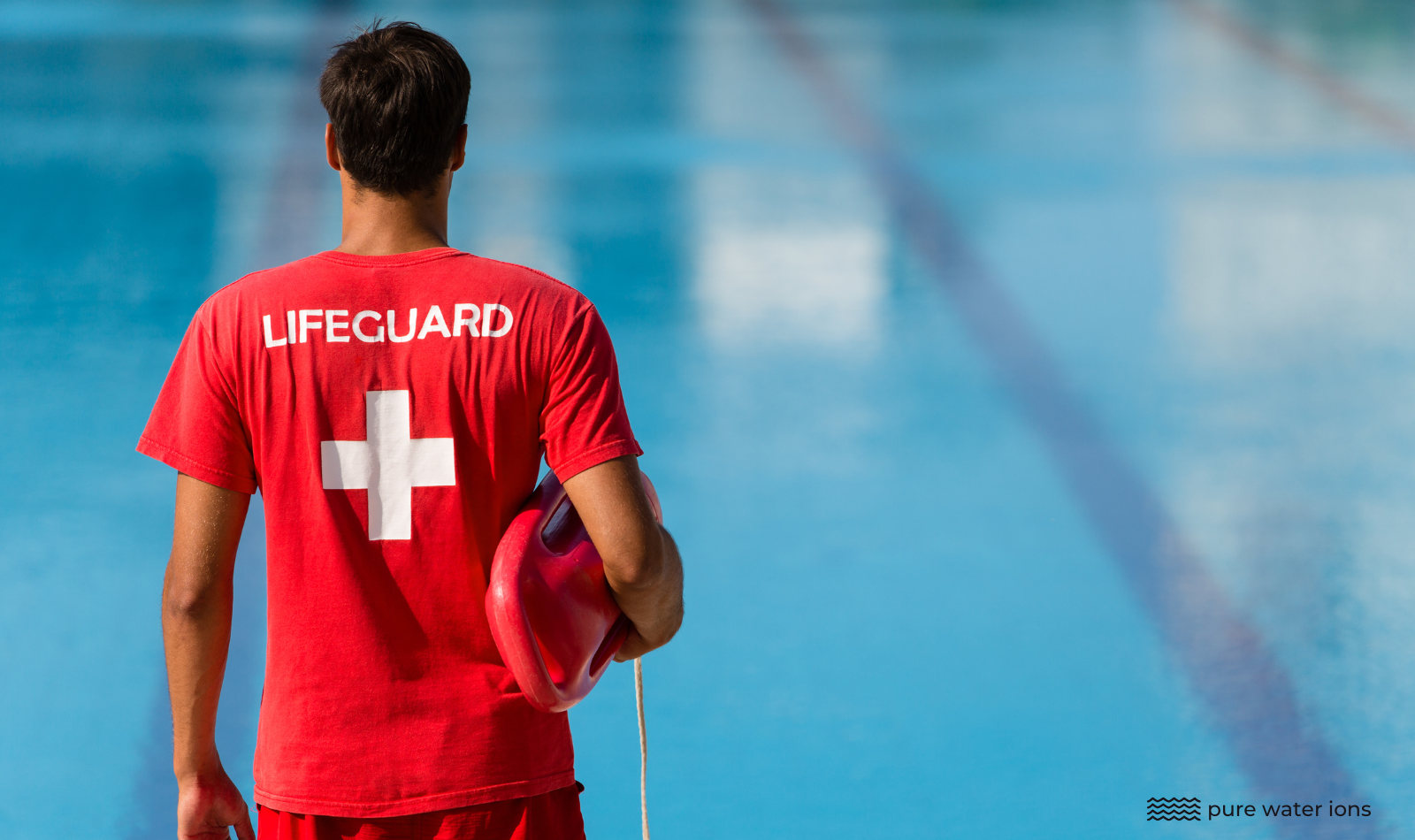
Wind plays an important role in pool water evaporation. Wind increases the speed of evaporation by sweeping away the water vapor as it gathers over the pool.
In the absence of wind, the water vapor will hover above the pool like a blanket and will slow down the evaporation process. Wind removes this water vapor film and allows a new blanket to take its place.
Other factors that play a role in pool water evaporation are humidity, sunlight, and pool size & shape. Let’s take a look at how each of these impact pool water evaporation.
TEMPERATURE
Temperature plays one of the most significant roles in the evaporation of water from a pool. As temperature increases, so too does the rate of evaporation. As water molecules in the pool absorb heat they become excited and begin to escape as water vapor.
Pools in dry hot climates that are exposed to direct sunlight experience the most water evaporation. The higher the temperature, the more heat, and the more water evaporates as water vapor. Note, pool water also evaporates in cooler climates but at a much lower rate.
WIND
Wind has a significant impact on how much water evaporates from a pool. Wind removes the humid air above the pool that contains water vapor and replaces it with dry air. This dry air then absorbs fresh water vapor from the pool surface. And this cycle repeats itself as wind sweeps away this humid air.
Pools situated in areas with little shelter experience the highest levels of wind evaporation. Windbreakers or walled enclosures are great ways of protecting a pool from the evaporative effects of wind.
HUMIDITY
Humidity plays a big role in how much water a pool loses to evaporation. The higher the level of humidity in the air, the lower the amount of evaporation that occurs. This is because humid air already contains a high level of moisture and has a reduced ability to absorb water vapor. On the other hand, dry air with low humidity is very effective at absorbing water vapor.
SUNLIGHT
Exposure to direct sunlight is a contributing factor to pool water evaporation. Pools that are directly exposed to sunlight heat up more quickly than pools situated in shaded areas.
SIZE & SHAPE OF POOL
The size and shape of a pool plays a role in how it loses water to evaporation. Specifically, pools with a larger surface area experience the greatest level of evaporation.
Why is that? Larger surface areas mean more water is exposed to direct sunlight and the movement of dry air. This speeds up the rate of evaporation. On the other hand, deep pools with relatively low surface areas experience less evaporation.
RELATED
When’s the Best Time to Water Grass?
How Much Water Does It Take to Grow an Almond?
POOL WATER EVAPORATION RATE
What is pool water evaporation rate? Pool water evaporation rate is the rate at which pool water transforms to water vapor and leaves the pool in gaseous form. It results in a loss of water volume and can be noticed as the water level slowly falls. Pool water evaporation rate is calculated by measuring the change in water level over a time period. And, it’s very simple – see below.
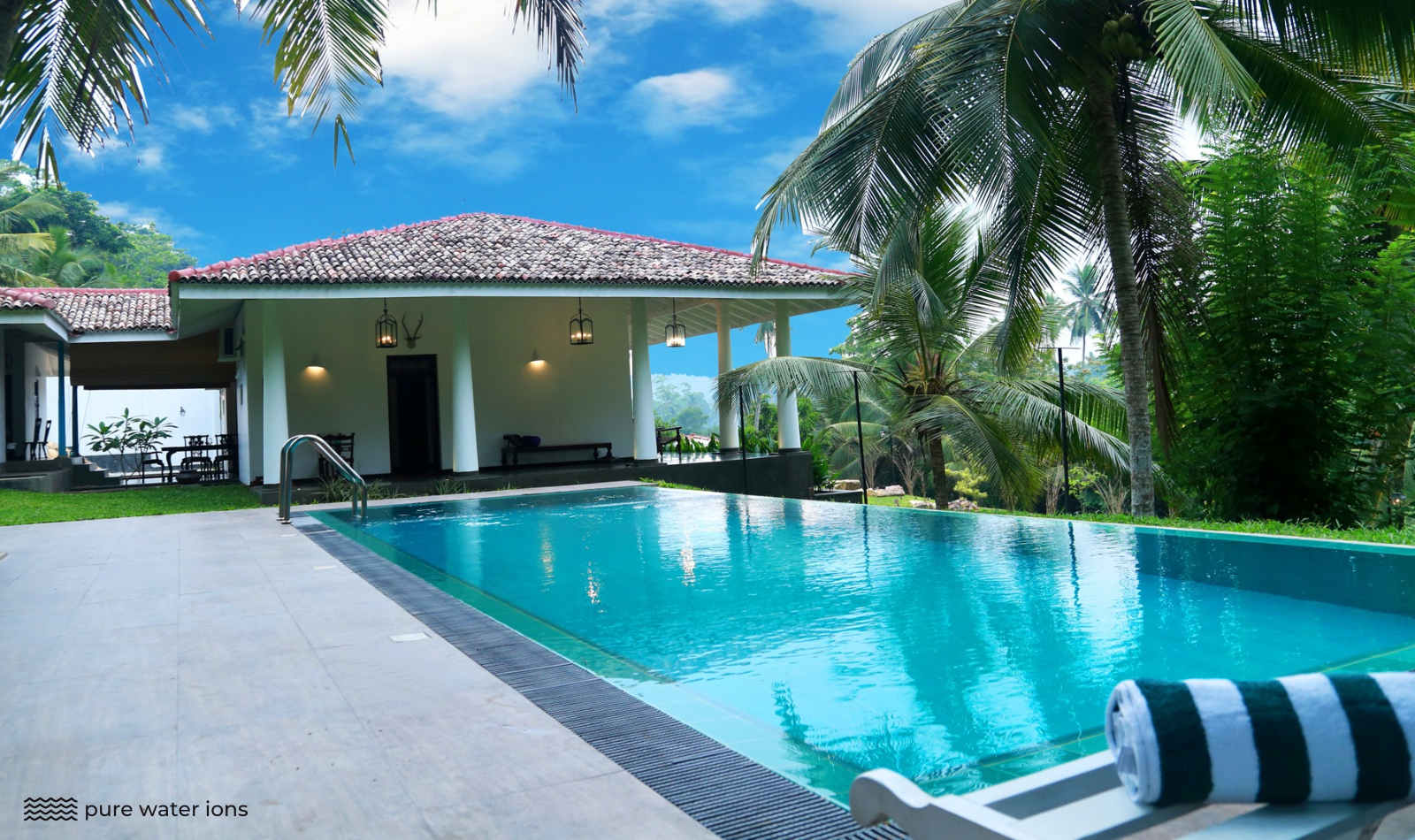
HOW TO CALCULATE
Calculating pool evaporation rate is easy. All you have to do is measure the drop in water level over 24 hours and calculate the evaporation rate in inches per day. You can do this by marking the top of the water level with a piece of tape. Then, repeat the process 24 hours later.
The difference between the two marks indicates the drop in water level over those 24 hours. Repeat the process over a larger time period and calculate an average for a more accurate value. This gives you a pool evaporation rate average in inches per day.
FORMULA
• (Water Mark Day 1) – (Water Mark Day 2) = Evaporation Rate (inches)
HOW MUCH EVAPORATION IS NORMAL FOR A POOL?
How much water does a pool lose to evaporation? How much water evaporates from a pool each day? A pool normally loses between 1/4 inch to 1 inch of water to evaporation each day. Pools located in hot, dry climates with a breeze and lots of sunlight will experience more evaporation than pools in cool, humid climates.
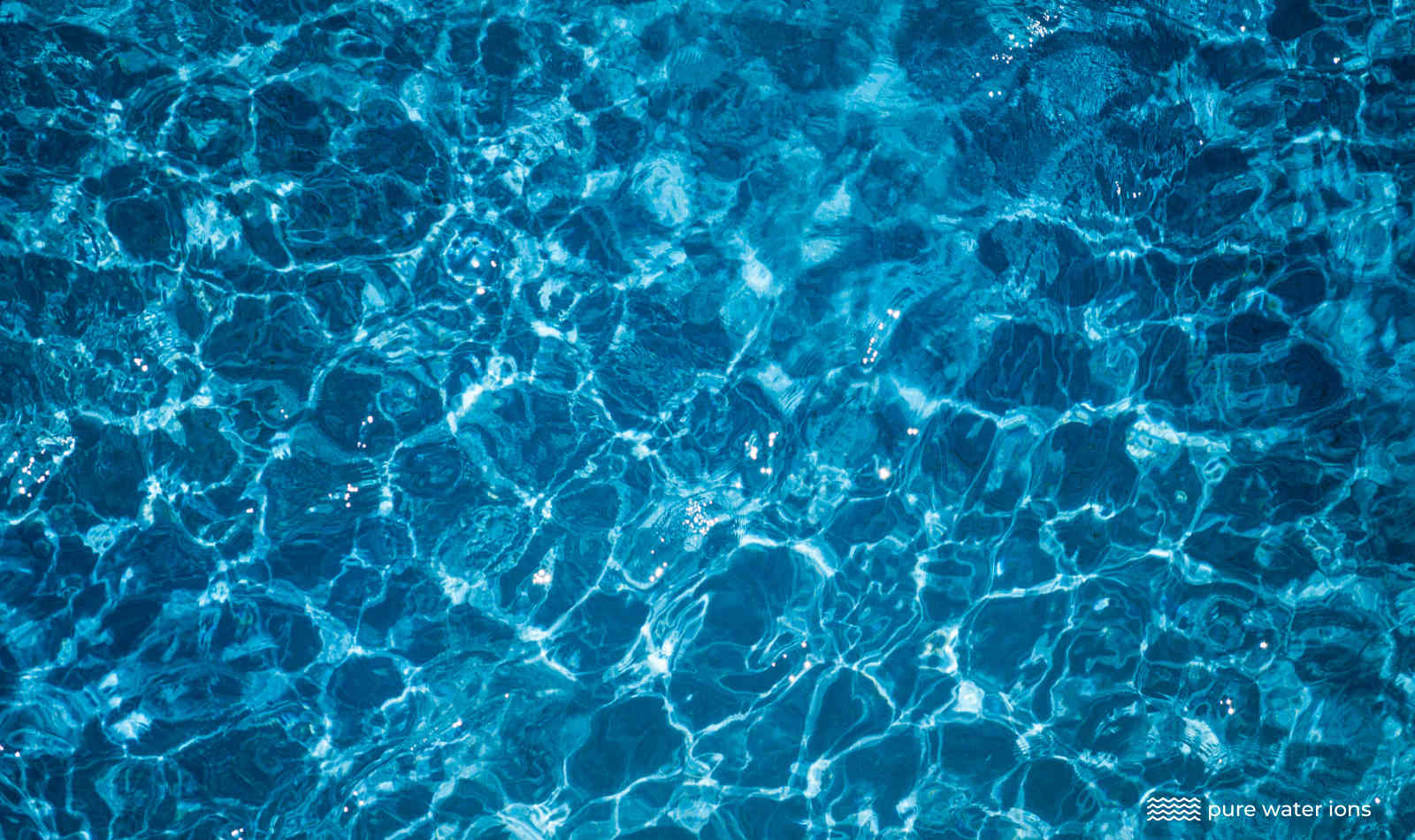
An average-sized rectangular pool measuring 16′ x 32′ feet with an average depth of 4 feet will lose 1 inch of water per day in a hot, dry, and sunny climate. A similar pool located in a milder climate with a greater level of humidity can expect to lose 1/4 inch of water per day. This is the normal evaporation for an average-sized pool based on climate conditions.
HOW TO STOP WATER EVAPORATING FROM A POOL
There are several methods you can use to reduce the rate of evaporation from a pool. Although it may not be possible to completely stop the evaporation process there are some simple steps you can take to greatly reduce it. Evaporation is a natural process and your aim should be to minimize it, not completely stop it.

Use a Pool Cover
A pool cover is the best way to reduce water evaporation from a pool. When not in use, place a cover across the pool. A cover not only reduces evaporation but also keeps debris from falling into the pool. There is a range of cover types on the market. You can choose from solid, mesh, and automatic covers that operate using a timer.
Use a Windbreak
A windbreak is another great device for reducing pool water evaporation. A windbreak can include a row of trees, a hedge, a screen, or a wall. These create a physical barrier to prevailing wind and protect the pool surface from wind evaporation.
Lower Pool Temperature
You can reduce the rate of evaporation by lowering the temperature of the pool. If you have a heated pool, simply reduce the pool temperature by a couple of degrees. The cooler water will be more resistant to evaporation. If you have no temperature control, you can place a shade above the pool for a similar effect.
Reduce Pool Usage
Another effective method of reducing evaporation is to reduce pool usage. The more a pool is used, the greater the level of evaporation. Motion in the water facilitates the evaporation process by encouraging the escape of water vapor from the water’s surface.
Add a Pool Cover Liquid
A pool liquid cover is a chemical you can add to the pool that creates a liquid barrier on the surface of the pool. This cover reduces evaporation and performs in a similar way to a regular physical pool cover. Liquid covers are made from non-toxic substances and are safe to swim in.
RELATED
• Drinking Warm Water Before Bedtime
• Tips For Chatting at Water Cooler
• How Much Water Does a Camel Drink?
IS YOUR POOL LOSING WATER BY EVAPORATION OR A LEAK?
Have you considered a pool leak? It can be difficult to tell if a pool is losing water due to evaporation or a pool leak. If the pool is losing more than 1” inch per day you should investigate for the presence of a leak.
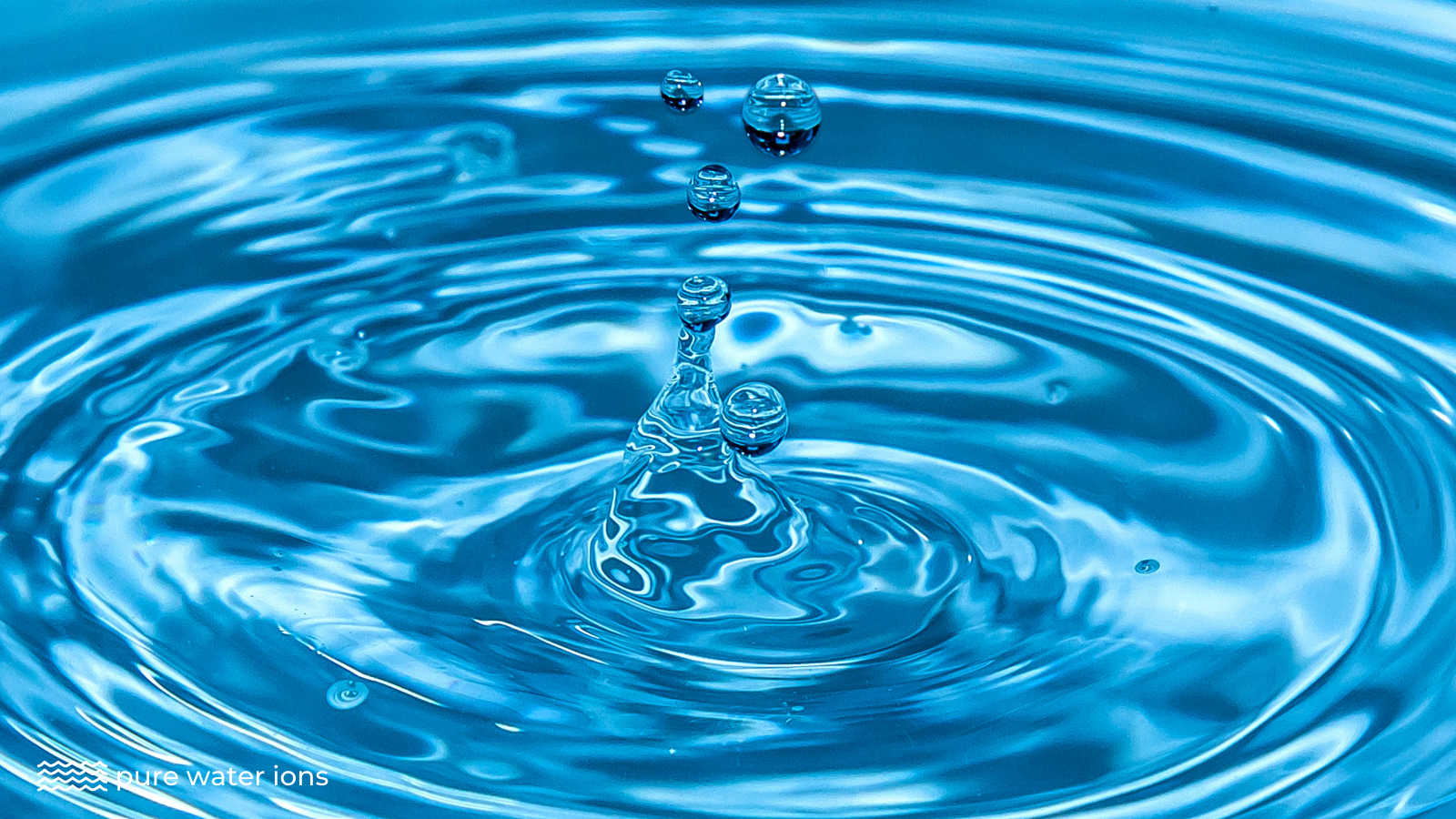
How to Detect a Leak in a Pool
There are several methods you can use to detect a pool leak. The most popular are the dye test and bucket test. Below we cover all the methods available for detecting a pool leak.
Dye Test
This is one of the simplest and most effective methods of detecting a pool leak. Simply, turn off the pool pump and filtration system and add some food coloring to the pool. Then, stand back and observe the movement of the colored water. Is it moving towards a specific point? If it is, this is a clear sign of the presence of a leak.
Bucket Test
Grab a bucket and fill it with water. Place it next to the pool surface and mark the water level on side of the bucket. Also, mark the pool water level by pacing some tape on the side of the pool in line with the top of the watermark. Wait 24 hours. Then measure the drop in water level for the bucket and the pool. If the pool water has dropped more than the bucket level, there may be a leak.
Pool Equipment Inspection
Take a look at all the pool equipment. Inspect the water pump, pool filter, heater, and all pipework for signs of a leak or drip. If you find any, you’ve located the leak.
Listen For Sounds
If you have a big leak you should be able to hear some unusual sounds. Stand on the edge of the pool and listen out for unusual hissing or gurgling noises. These could be the noises of water leaving the pool unexpectedly.
Hire a Professional
If you’ve tried the above steps and cannot locate the source of the pool leak, it’s time to get a professional in. These people use specialized equipment to detect and locate pool leaks, including electronic high-precision listening devices to pinpoint water leaks.
